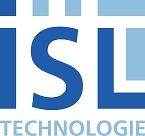VMware Horizon Cloud Next-Gen
Remote work is driving organizations like yours to seek new strategies and technologies for delivering secure access to company resources and data. Virtualization is one approach. As it gains traction as a means to deliver seamless access to desktops and apps with persistent user experience, cost optimization and scalability, cost optimization and scalability become increasingly important. VMware Horizon® Cloud next-gen is a desktop-as-a-service (DaaS) architecture that can support your remote workforce with a modern hybrid and multi-cloud desktop and app virtualization platform built on Microsoft Azure. This datasheet provides an overview of architecture building blocks and benefits. Download the datasheet for an at-a-glance of how it lowers costs, increases scalability, and improves visibility and troubleshooting.
What is VMware Horizon Cloud next-gen?
VMware Horizon Cloud next-gen is an updated desktop-as-a-service (DaaS) architecture that operates on Microsoft Azure. It simplifies the infrastructure needed for delivering virtual desktops and applications, leveraging a 'thin edge' architecture that enhances scalability and stability while reducing infrastructure costs by up to 78%. This version includes features like VMware App Volumes™ and VMware Dynamic Environment Manager™.
How does Horizon Cloud next-gen improve scalability?
Horizon Cloud next-gen significantly improves scalability by allowing each Horizon Edge to support up to 5,000 users per Azure subscription, compared to the previous limit of 2,000 users. Organizations can easily increase capacity by adding more Azure subscriptions, with each Horizon Edge capable of supporting up to four subscriptions, accommodating a total of 20,000 users.
What are the benefits of the API-driven architecture?
The API-driven architecture of Horizon Cloud next-gen allows for seamless integration with third-party solutions, enabling automation and customization of workflows. This means that any management task performed through the interface can also be executed via APIs, facilitating easier integration with existing systems and enhancing operational efficiency.



